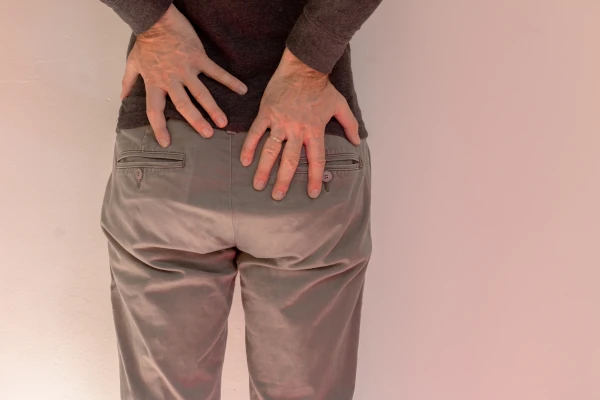
Best Treatment of Tennis Elbow(Lateral Epicondylitis) at Home
- Dr. Deepika Rai (MPT)
Connect with our expert physiotherapist for personalized physiotherapy advice.
Tennis elbow, medically known as lateral epicondylitis, is a painful condition that affects the outer part of the elbow due to overuse of the forearm muscles. While it is commonly associated with tennis players, this injury can affect anyone who performs repetitive arm movements in daily activities, whether from playing sports, working with tools, or even typing.
What Is Tennis Elbow?
Tennis elbow is a type of tendinopathy that involves inflammation or degeneration of the tendons that attach to the lateral epicondyle (the outer part of the elbow). These tendons connect the muscles of your forearm to the elbow and help in the movement of your wrist and fingers. Repetitive stress on these tendons can cause small tears, leading to pain and tenderness in the elbow region.
Common Symptoms of Tennis Elbow
Tennis elbow can develop gradually, with symptoms often worsening over time. Common symptoms include:
- Pain in the outer elbow: :
The pain may radiate down the forearm and worsen when gripping or lifting objects.
- Weak grip strength:
Difficulty holding items like a tennis racket, coffee cup, or even shaking hands.
- Elbow stiffness:
A sensation of tightness in the elbow, especially in the morning or after using the arm.
- Tenderness:
Sensitivity around the lateral epicondyle when touched.
- Worsening pain with specific activities:
Movements such as lifting, twisting, or extending the arm can intensify the pain.
Causes and Risk Factors of Tennis Elbow
Overuse and Repetitive Motion
The primary cause of tennis elbow is the overuse of the forearm muscles. Repetitive wrist and arm motions strain the tendons, eventually leading to small tears and inflammation.
Common Risk Factors:
- Sports:
Tennis, squash, and other racquet sports that involve repetitive wrist movements.
- Occupational tasks:
Jobs that involve repetitive arm and wrist motions, such as carpentry, painting, or typing, can lead to tennis elbow.
- Age:
Tennis elbow is more common in people aged 30 to 50 due to natural wear and tear on the tendons.
- Poor technique:
Incorrect posture or technique during sports or tasks can increase the risk of injury.
How Physiotherapy Helps in Treating Tennis Elbow
Physiotherapy is one of the most effective treatments for tennis elbow. A physiotherapist will develop a tailored plan to reduce pain, improve strength, and restore normal function.
- Pain Management
To reduce pain, a physiotherapist may use treatments like:
- Ice therapy:
Applying cold compresses to reduce inflammation and pain.
- Ultrasound:
Using sound waves to stimulate blood flow and promote healing.
- Manual therapy:
Hands-on techniques to release tension and improve mobility in the elbow and forearm muscles.
- Ice therapy:
- Stretching and Strengthening Exercises
Physiotherapists prescribe targeted exercises to restore the strength and flexibility of the forearm muscles and tendons. Examples include:
- Wrist flexor and extensor stretches:
These help to elongate the muscles around the elbow.
- Isometric exercises:
These involve contracting the muscles without moving the joint to build strength without aggravating pain.
- Wrist flexor and extensor stretches:
- Eccentric Training
Eccentric exercises focus on the controlled lengthening of the muscles, which has been proven effective in treating tendinopathies like tennis elbow.
- Bracing or Taping
Wearing a forearm brace can offload stress on the tendons, allowing them to heal more quickly. Kinesiology taping can also be used to support the elbow and reduce strain during physical activities.
- Ergonomic Advice
A physiotherapist may provide tips to improve posture, body mechanics, and equipment usage, whether at work or during sports, to prevent further aggravation of the injury.
Preventing Tennis Elbow
Preventing tennis elbow involves making adjustments to your activities and techniques. Here are a few preventive tips:
- Warm-up and stretch:
Always stretch and warm up before engaging in physical activities or sports.
- Improve technique:
In sports like tennis, ensuring proper technique can reduce strain on your tendons.
- Take breaks:
Avoid prolonged repetitive activities without breaks. Rest allows muscles and tendons to recover.
- Strengthen forearm muscles:
Regularly strengthening the muscles around your forearm can reduce the risk of developing tennis elbow.
Conclusion
Tennis elbow can be painful and disruptive, but with the right physiotherapy treatments, you can manage and recover from this condition. If you’re experiencing persistent pain in your elbow or forearm, consult with a physiotherapist who can develop a customized treatment plan to help restore your strength and function.
Connect with our expert physiotherapist for personalized physiotherapy advice.



